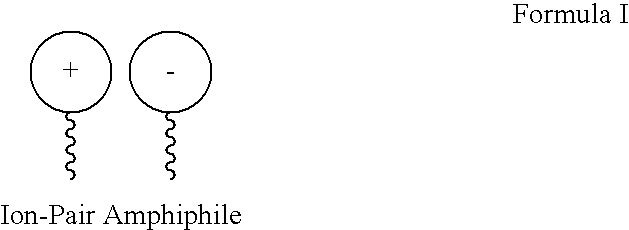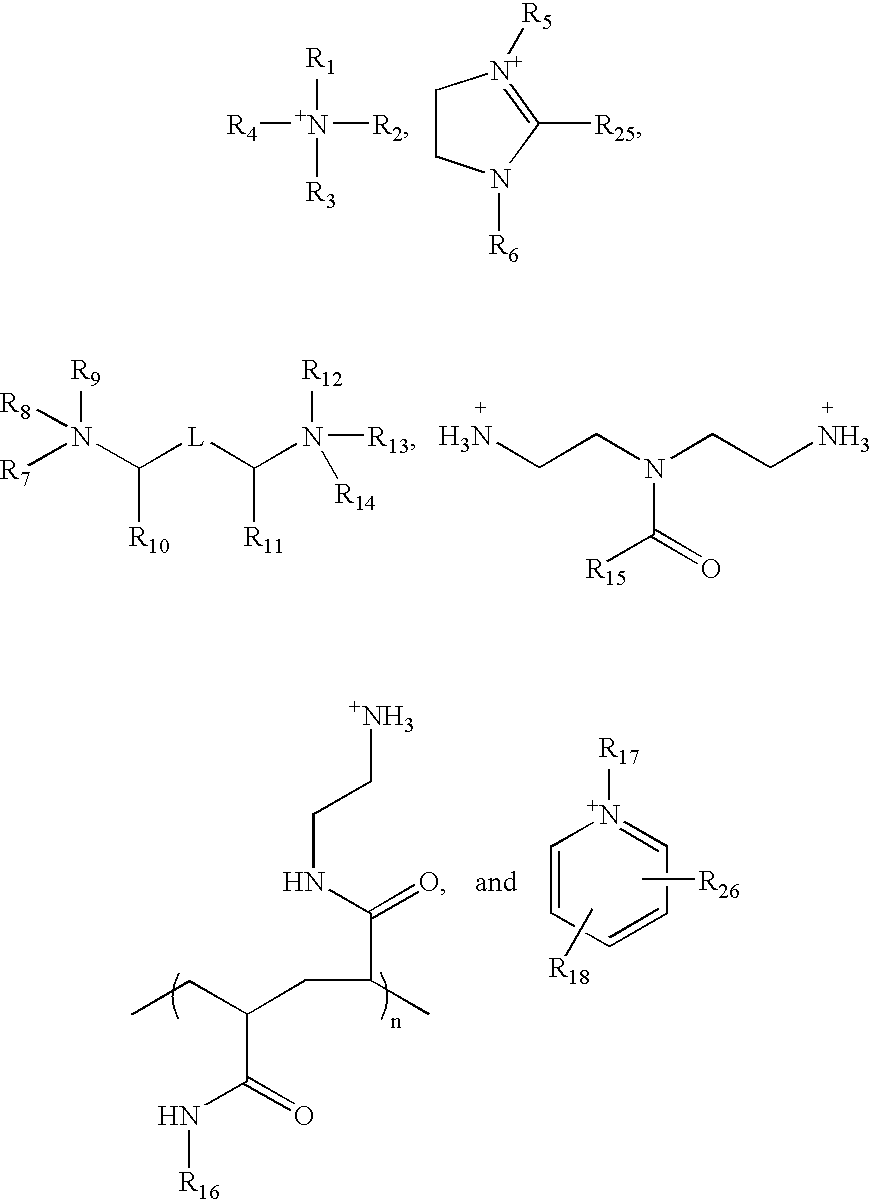Ion pair amphiphiles as hydrate inhibitors
a technology of hydrate inhibitors and amphiphiles, which is applied in the direction of gaseous fuels, well accessories, boreholes/well accessories, etc., can solve the problems of affecting the flow of hydrate particles, affecting the efficiency of hydrate production, etc., to achieve excellent hydrate inhibition characteristics, improve the flow of particles, and improve the effect of water cu
- Summary
- Abstract
- Description
- Claims
- Application Information
AI Technical Summary
Benefits of technology
Problems solved by technology
Method used
Image
Examples
example 1
Rocking Cell Testing of Representative Ion-Pair Amphiphiles
[0049] Representative ion-pair amphiphiles are tested under simulated field conditions corresponding to steady-state flowing, shut-in and re-start operations using the protocols and equipment described below. The fluids tested are shown in Table 1, the compositions of the fluids is shown in Tables 2 and 3 and the test conditions are shown in Table 4.
TABLE 1Test FluidsPhaseCompositionVolumeHydrocarbon:Provided by producer, a GOM black oil,12 mL totalor a synthetic condensate (Table 3)liquidBrine:As specified to match field conditionsvolumeGas:Green Canyon gas (Table 2)
[0050]
TABLE 2Green Canyon gas compositionComponentmol %Nitrogen0.39%Methane87.26%Ethane7.57%Propane3.10%iso-Butane0.49%n-Butane0.79%iso-Pentane0.20%n-Pentane0.20%
[0051]
TABLE 3Synthetic condensate compositionComponentmol %wt %n-C610% 6.66%n-C712% 9.30%m-c-C68%6.07%n-C811% 9.71%n-C97%6.94%n-C104%4.40n-C123%3.95%n-C152%3.28%n-C192%4.15%n-C221%2.40%p-cymene25% 25...
PUM
| Property | Measurement | Unit |
|---|---|---|
| size | aaaaa | aaaaa |
| operating temperature | aaaaa | aaaaa |
| operating temperature | aaaaa | aaaaa |
Abstract
Description
Claims
Application Information
 Login to View More
Login to View More - R&D
- Intellectual Property
- Life Sciences
- Materials
- Tech Scout
- Unparalleled Data Quality
- Higher Quality Content
- 60% Fewer Hallucinations
Browse by: Latest US Patents, China's latest patents, Technical Efficacy Thesaurus, Application Domain, Technology Topic, Popular Technical Reports.
© 2025 PatSnap. All rights reserved.Legal|Privacy policy|Modern Slavery Act Transparency Statement|Sitemap|About US| Contact US: help@patsnap.com



